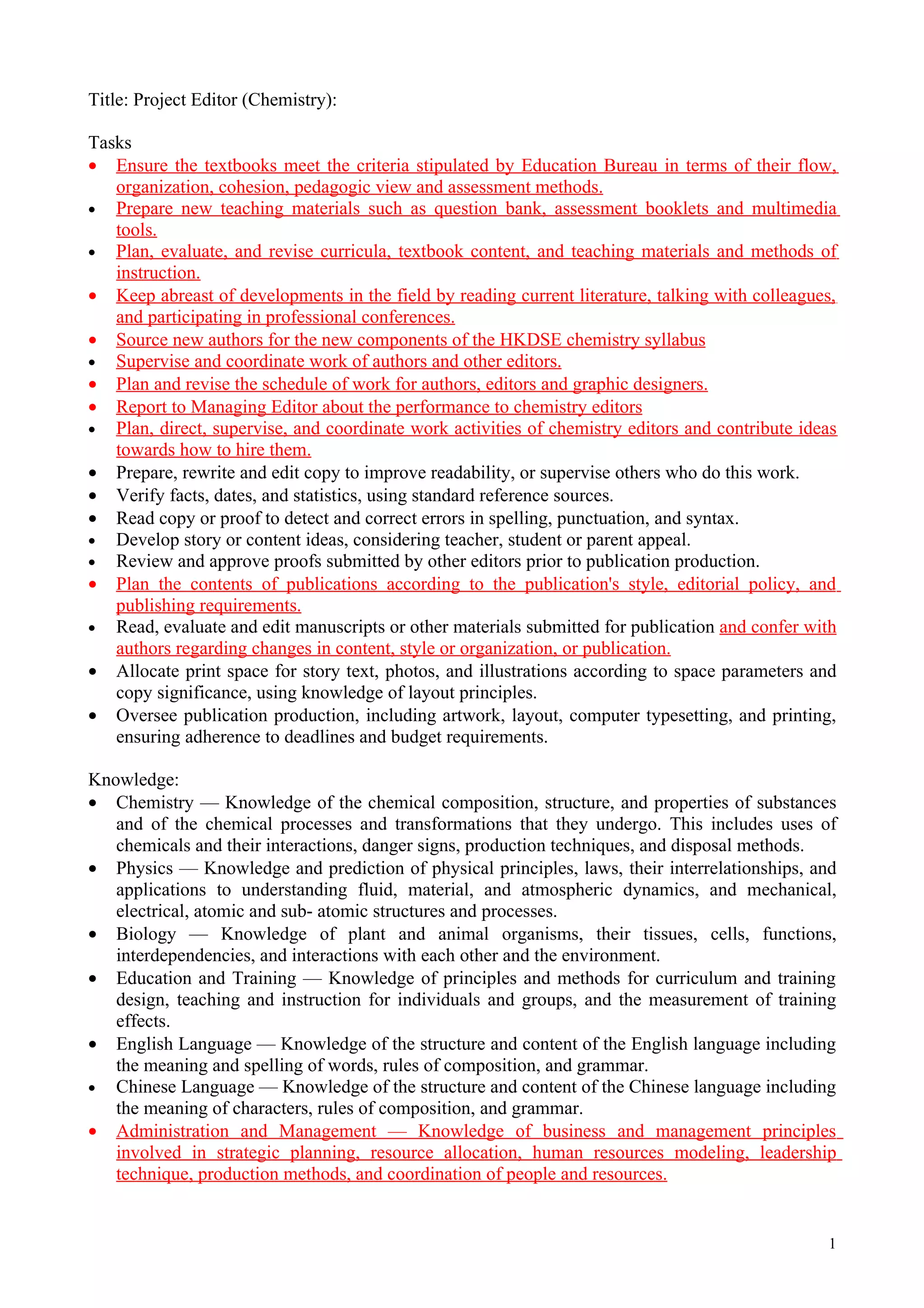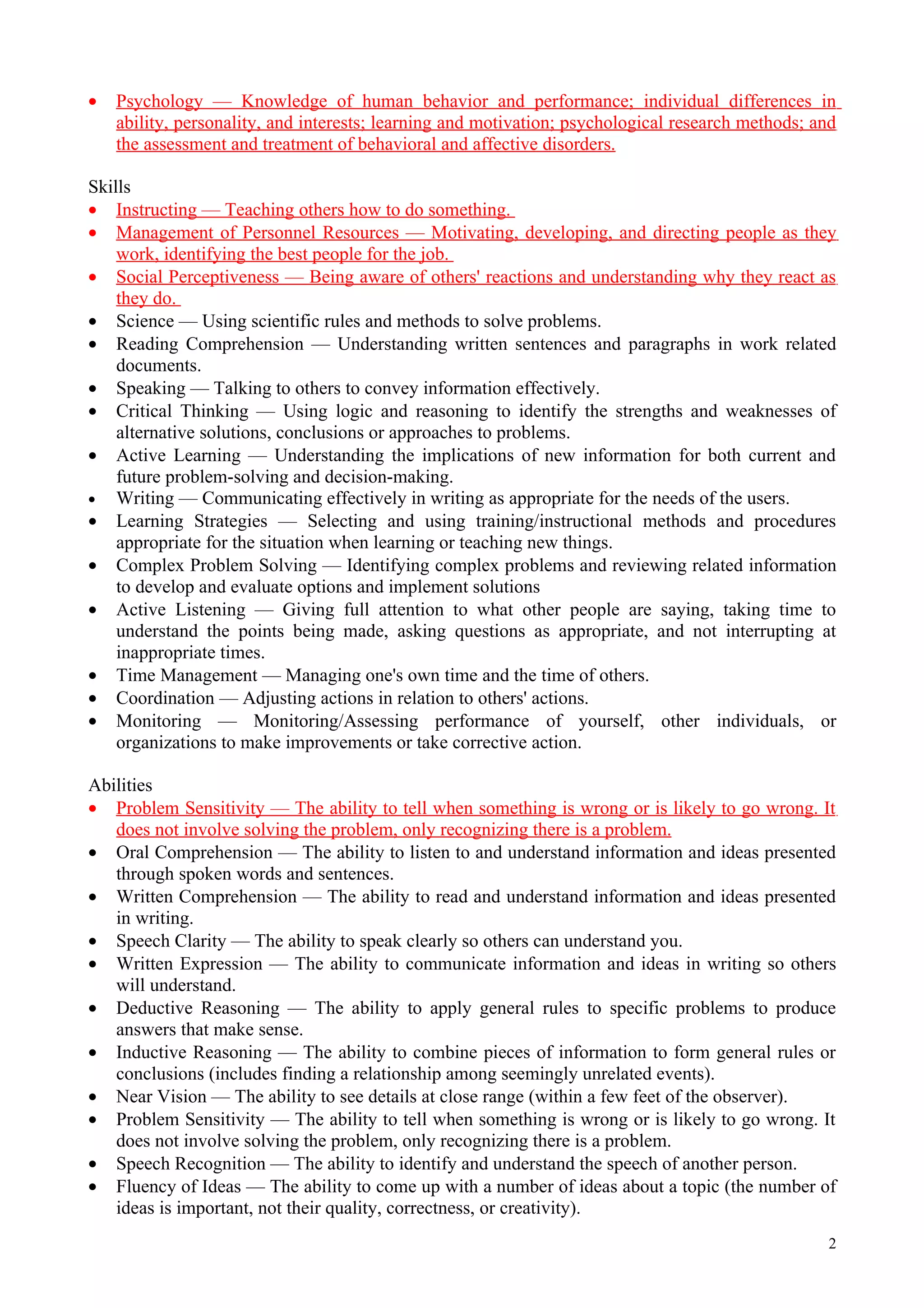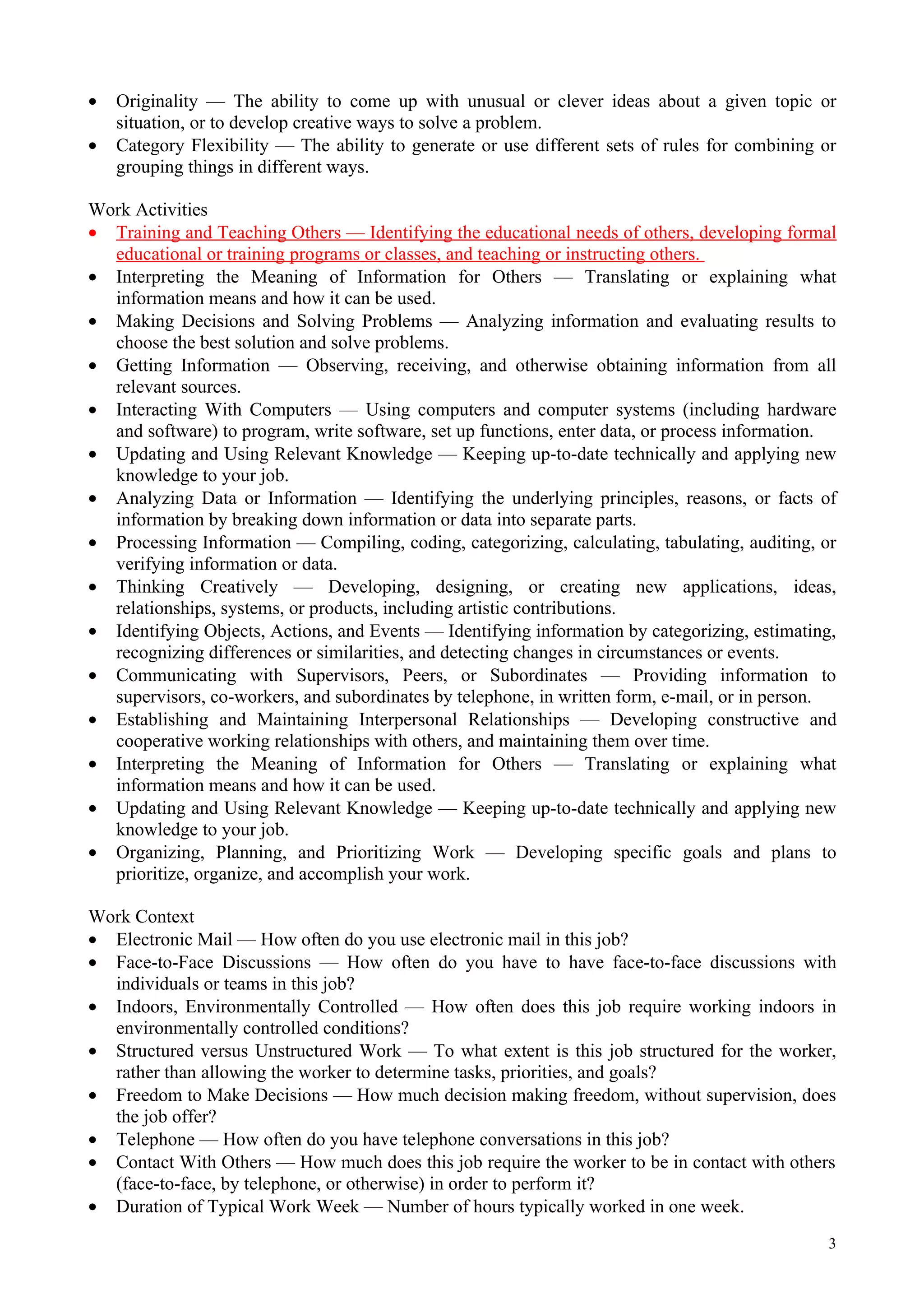The document describes the tasks, knowledge, skills, abilities, and work context for a Project Editor (Chemistry) position. Key responsibilities include ensuring textbooks meet education standards, preparing new teaching materials, planning and revising curricula, and supervising other editors. The position requires knowledge of chemistry, physics, biology and education, as well as skills in instructing, critical thinking, writing, and active listening. The work is structured, involves interacting with others, and emphasizes accuracy.




